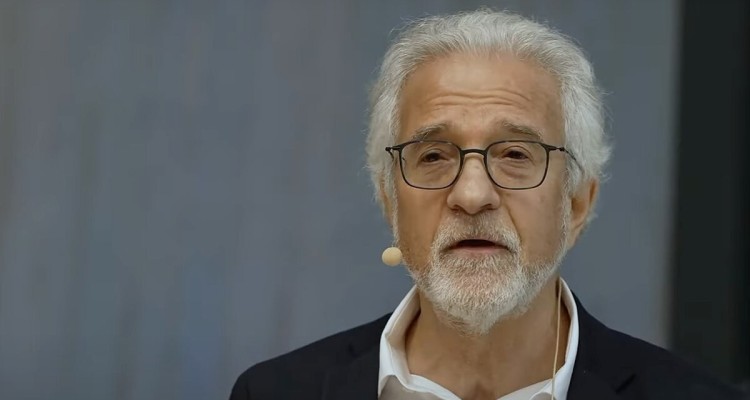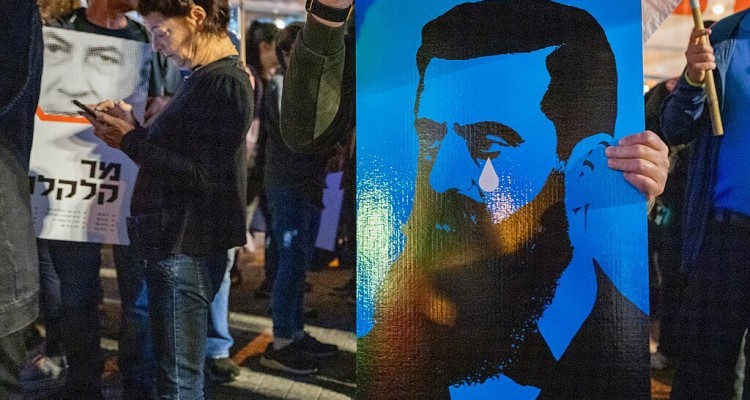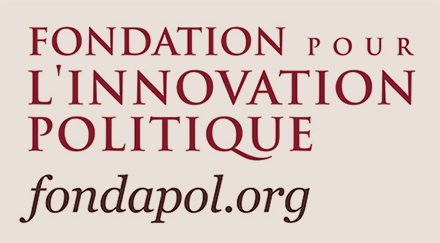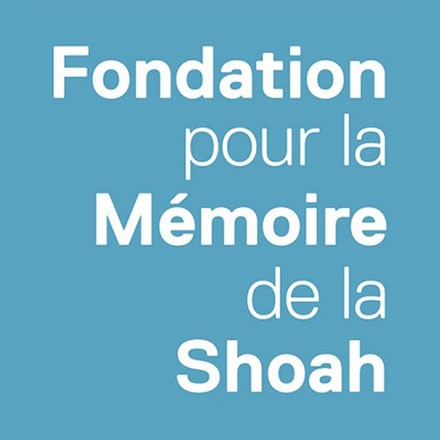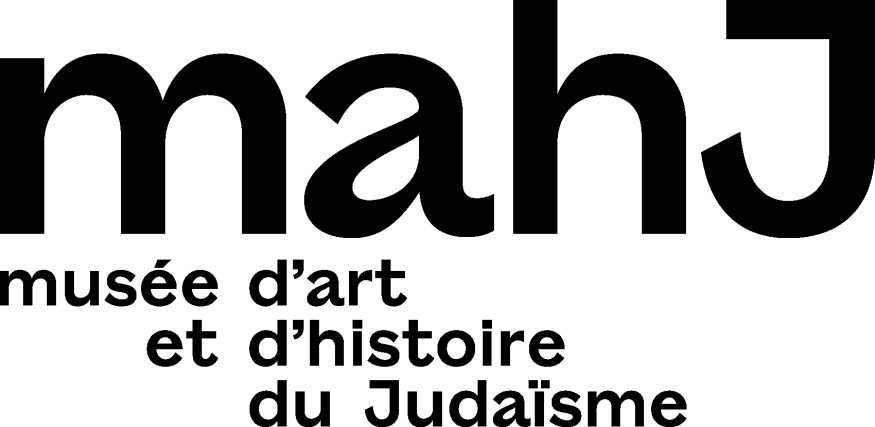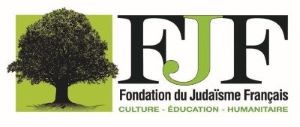Much has been written about Holocaust museums and memorials. Ljiljana Radonić focuses in this text[1] to the way the Shoah is exhibited in national museums (especially in Central and Eastern Europe) yet devoted to other tragic events. But why? It is not so much a matter of repairing an omission as of evoking Jewish suffering as a model. In many cases, the message to be understood: “Our” victims suffered “like the Jews”.
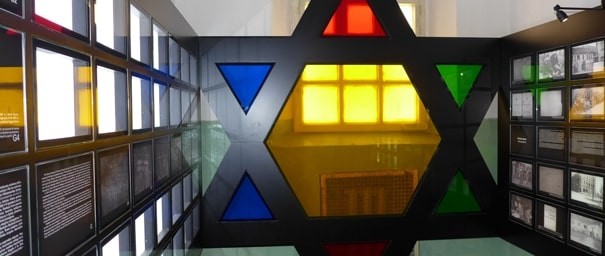
The term “genocide” is used in the European context primarily in reference to two historical events beyond the Shoah: for the thesis of the “double genocide” of the Nazi regime and the Soviets in East Central European countries and for the mass murder in Srebrenica in 1995 over the course of the Yugoslav wars. While much has been written about Holocaust memorial museums, this article focuses on those museums in which Shoah memory is referenced, but the focus lies on other atrocities the memory is experiences as threatened by Shoah memory. Therefore, the first part of this article discusses how memorial museums in East Central Europe – devoted to both the Nazi occupation and the Soviet occupation – exhibit World War II, Holocaust and Gulag. The second part shows how memorial museums devoted to the 1990s war in Bosnia-Herzegovina depict genocide and relate to the World War II atrocities. In both cases, the memory of the Shoah and its museumization serves as a kind of template[2] for exhibiting one’s “own” victim experience. With regard to the remembrance of the Second World War, this goes hand in hand with a pronounced competition of victims, so that “our” victims from the majority population are presented completely differently than the “others,” the Jewish victims.
*
Opened in Vilnius, Lithuania in 1992, the Museum of Genocide Victims[3] is located in a building where the Soviet NKVD, then the Gestapo, and then the KGB tortured prisoners. However, prior to 2011 the permanent exhibition ignored the Nazi occupation and jumped from the description of the first Soviet occupation of 1940–1941 to the second Soviet occupation of 1944. A sign placed at ankle-height informed visitors interested in finding out more about the Nazi era in In 2011, the museum added an exhibition about the Nazi era in a former prison cell in the basement. In the course of this, the traces of the Nazi prisoners who had carved their names and dates of detention there were preserved behind glass plates. But while “our” Lithuanian Soviet victims are presented in the permanent exhibition on the ground and first floors of the museum with a lot of empathy, individual testimonials, private photographs, drawings and objects, the Jewish victims remain mere numbers and anonymous masses of people. “Jews are transported to concentration camps, 1943” is a terse caption that does not reveal that the photo was taken by the famous Jewish photographer Henryk Ross in the Litzmannstadt/Łódź ghetto – in 1942, not in 1943 – and makes no reference to Lithuania. Lithuania and the Holocaust to visit the Vilna Gaon Jewish Museum, just 500 meters away. The term “genocide victims” in the museum’s name thus referred solely to the victims of the two Soviet occupations and referred to the “double genocide”. In East Central European countries memory politics often strongly relies on the claim that not only the “Third Reich” committed genocide against the Jews, but that also Soviets had committed genocide against the majority population of Lithuania, Latvia, Estonia or Hungary[4].
Today, individual biographical stories in particular are increasingly replacing the former “pedagogy of horror,” the exhibition of anonymous mountains of corpses and masses of humanity. Sometimes private photos are deliberately contrasted with degrading pictures taken by perpetrators. The Lithuanian museum applies this technique when it comes to “our” own victims, but not in the Holocaust exhibition in the basement cell that is dominated by a giant Star of David made of colored glass: Here the inclusion of the Shoah seems like a kind of compulsory exercise after the museum had been criticized for years for its omission.
Compared to similar institutions in Latvia (Museum of the Occupation of Latvia) and Estonia (Museum of Occupations in Tallinn), this Lithuanian museum is an extreme example of an attempt to “contain” the memory of the Nazi era and the Shoah so that they do not threaten their “own” victim experience. A plaque on the ground floor listing the number of victims of all three occupations makes it clear that the Nazi era, if one includes the Jewish victims, claimed far more victims in Lithuania than the two Soviet occupations: 240,000 murdered, “(including about 200,000 Jews)” it says on the plaque. In 2015, an exhibition about the Roma victims of National Socialism, containing private photos and names of the murdered, was added to another basement cell. The museum thus follows the international trend of finally wresting Roma victims from oblivion – and the individualizing private photographs of these victims, in contrast to those of the Jewish ones, do not appear to be a threat to their own narrative. In 2018, the museum finally yielded to years of criticism from home and abroad and renamed itself the Museum of Occupations and Freedom Fights in an act of “verbal disarmament.”
*
Similar trends, although less conspicuous, were also to be found at the Museum of the Occupation of Latvia in Riga, before it rated their individual stories full of empathy into guided tours. By contrast, as far as visual material was concerned, no individual testimonies of Shoah victims were presented, just an anonymous Star of David or an oversized, degrading photo of Jewish women in underwear shortly before they were shot[5]. “Rescuers of Jews,” however, were presented by name and with individualized private photos – a privilege reserved for the Latvian majority population. It is to be hoped that the new permanent exhibition planned for 2020 will take a different path. Undoubtedly, the knowledge about Stalinist crimes is still very vague among many people and there is still a lot of catching up to do, but does this knowledge have to be conveyed at the expense of the Shoah?
The focus on “rescuers of Jews” is a phenomenon that can be observed more and more in Polish and Hungarian museums in times of increasingly authoritarian backlashes and the rewriting of history. In 2016, for example, the large Ulma-Family Museum of Poles Saving Jews in World War II, co-financed by the Polish Ministry of Culture, opened in the small Polish town of Markowa. In Hungary, besides the existing Holocaust Memorial Center, which opened in 2004 and critically examines Hungarian complicity, a second Budapest Holocaust Museum, the House of Fates, which will have a strong focus on Hungarian “rescuers of Jews,” is to start operation in 2020 after long-running conflicts. At the Museum of the Second World War, which opened in Gdańsk in northern Poland in 2017, “rescuers of Jews” as of late play a prominent role. In the course of the attack by the Polish ruling party “Law and Justice” (PiS) on the museum initiated during the previous government, not only was the founding director replaced by a representative of the State Institute of National Remembrance (IPN) through a dirty trick. Branded as being too international and not Polish enough, the exhibition was also significantly altered. One novelty concerns the Ulma family, whose larger-than-life portrait – to the horror of the curators of this part of the exhibition[6] – has now been placed in the middle of the Holocaust section of the exhibition. The international trend towards the “universalization of the Holocaust<footnote>Jan ECKEL/Claudia MOISEL (eds.), Universalisierung des Holocaust? Erinnerungskultur und Geschichtspolitik in internationaler Perspektive, Göttingen: Wallstein, 2008</footnote>” as a negative icon of our time is countered here by placing the Polish rescuers in the foreground as the “actual” subject of the exhibition.
Another change in the Gdańsk museum brings the “double genocide” thesis into play. Two new text panels now address the “Soviet genocide against Poland and the communist state of mass terror,” that is, the murders of the Polish minority in the Soviet Union before World War II, which the museum now terms a “systematic genocide.” It claims that the genocide against Poland took place parallel to the liquidation of other minorities, but only in the Polish case as much as 18 percent of the minority was affected by the persecution, 80 percent of whom were executed. The introduction of the thesis of the Soviet genocide is to ensure that “our” Polish suffering is in no way inferior to the Shoah.
Beyond the “double genocide” thesis, there are other strategies for equating “our” suffering with the Shoah. The Warsaw Rising Museums (dedicated to the 1944 Uprising, not to be confused with the Warsaw Ghetto Uprising of 1943), founded in 2004 by the then-PiS Mayor of Warsaw and later Polish President Lech Kaczyński, is a case in point. The museum guidebook on the one hand introduces “our” Polish victims with touching stories. The only Jewish woman who is introduced by name and with a short biography, on the other hand, is a nun who later converted to Catholicism[7]. Aside from that, the exhibition uses terms associated with Judaism and the Shoah to depict the suffering of non-Jewish Poles: It claims that after the “rising” was suppressed by the “Third Reich,” the “Warsaw exodus” took place, followed by a “selection” in the transit camps – not mentioning that this “selection” did not lead to death in the gas chambers.
*
According to the tenor, “our” victims had suffered “like the Jews,” and not only with regard to the interpretation of the Second World War. As far as coming to terms with the Yugoslav wars is concerned, Serbs, Bosniaks and Croats tend to argue that “we” are “today’s Jews.[8]” In the privately-financed Museum of Crimes against Humanity and Genocide, which opened in Sarajevo in 2016, one of the first exhibits shows a boy with a Star of David armband in the Warsaw Ghetto, next to a male upper arm with a white bandage. The explanation goes: “This was the first day of a campaign of extermination that resulted in executions, concentration camps, mass rapes and the ultimate removal of more than 94% of Bosnian Muslims and Bosnian Croats from the territory of the Prijedor municipality. This was the first time since the 1939 Nazi decree for Polish Jews to wear white armbands with the blue Star of David that members of an ethnic or religious group were to be marked for extermination in this way.”
The perpetrators, the Bosnian Serbs, thus become the “new Nazis.” It is interesting to note that the persecution of the Bosnian Jews in World War II does not serve as a point of reference, but the universalized symbol of the Warsaw Ghetto instead.
In the case of the museumization of the 1990s wars, however, it is not a question of victim competition with those of the Shoah, but rather of enforcing the notion of “us” as “victim people” and of “the Serbs” as “new Nazis.” Undoubtedly, Bosniaks had the highest number of victims to be mourned for in these wars. In order to put this on record, the dehistoricized reference to the Shoah is not required. Regardless of being brought forward by the Bosniak, Croatian or Serbian side, this equation stands in the way of dealing with the war and peaceful coexistence. The permanent exhibition at the Srebrenica-Potočari Memorial Museum, which opened in 2017 and refrains from such parallels, is pioneering and rather takes over museumization practices from the Holocaust museums, such as the individualization of victims’ fates and the subject of “the void” which the mass murder left behind, without trying to make sense of them. In this way, the Shoah and museums dedicated to it can serve as a template for exhibiting other genocides.
In contrast, mass murder did not occur in Western Europe after 1945 and thus the notion of “us” who have suffered just like the Jews cannot be found in memorial museums in the “West”. The antisemitic claim that Israelis are the new Nazis and the Palestinians the new Jews is present in public discourse – just like the antisemitic reaction to the Corona pandemic which claims that the Corona deniers are the new Jews. Yet, such topoi have not found their way into canonized memory politics in the form of exhibitions in memorial museums.
Ljiljana Radonić
Ljiljana Radonić is leading a European academic project entitled ‘Globalized Memorial Museums. Exhibiting Atrocities in the Era of Claims for Moral Universals’ at the Institute of Culture Studies and Theatre History of the Austrian Academy of Sciences. Her habilitation thesis was on the memory of World War II in post-communist museums and memorials. Since 1989 she has been teaching on European memory conflicts and theories of anti-Semitism at the Department of Political Science of the University of Vienna.
Notes
| 1 | The text is part of the “Globalized Memorial Museums” project which has received funding from the European Research Council (ERC) under the European Union’s Horizon 2020 research and innovation programme (GMM – grant agreement No 816784). It was first published as “Genozid-Erinnerungskulturen im europäischen Vergleich” in: Danielle Spera, Astrid Peterle (ed.): Die Zukunft der Erinnerung. Jüdische Museen und die Schoah im 21. Jahrhundert, Wiener Jahrbuch für jüdische Geschichte, Kultur und Museumswesen 12/2020. The text was translated into English by Brian Dorsey. It was also slightly enhanced for re-publication in this journal. |
| 2 | See Ljiljana RADONIĆ (ed.), The Holocaust/Genocide Template in Eastern Europe, London/New York: Routledge, 2019. |
| 3 | See Ekaterina MAKHOTINA, Erinnerungen an den Krieg – Krieg der Erinnerungen. Litauen und der Zweite Weltkrieg, Göttingen: Vandenhoeck und Ruprecht, 2017. |
| 4 | See John-Paul HIMKA and Joanna Beata Michlic (ed.), Bringing the Dark Past to Light: The Reception of the Holocaust in Postcommunist Europe, Lincoln: University of Nebraska Press, 2013. |
| 5 | See Ljiljana RADONIĆ, “From ‘Double Genocide’ to ‘the New Jews’: Holocaust, Genocide and Mass Violence in Post-Communist Memorial Museums,” Journal of Genocide Research 20 (2018) 4, 510–529, 521. |
| 6 | Daniel LOGEMANN, “Rosenkranz vs. Bordell oder polnische Geschichte im Kontext. Eine kursorische Einschätzung zum Museum des Zweiten Weltkriegs in Gdańsk,” Ljiljana RADONIĆ/Heidemarie UHL (eds.), Das umkämpfte Museum. Zeitgeschichte ausstellen zwischen Dekonstruktion und Sinnstiftung, Bielefeld: transcript-verlag, 2020, 55–72, 64. |
| 7 | Lena DĄBOWSKA-CICHOCKA et al., Guidebook to the Warsaw Rising Museum, Warsaw: Muzeum Powstania Warszawskiego, 2007, 68. |
| 8 | David Bruce MACDONALD, Balkan Holocausts? Serbian and Croatian victim-centred propaganda and the war in Yugoslavia, Manchester: Manchester University Press, 2002. |

